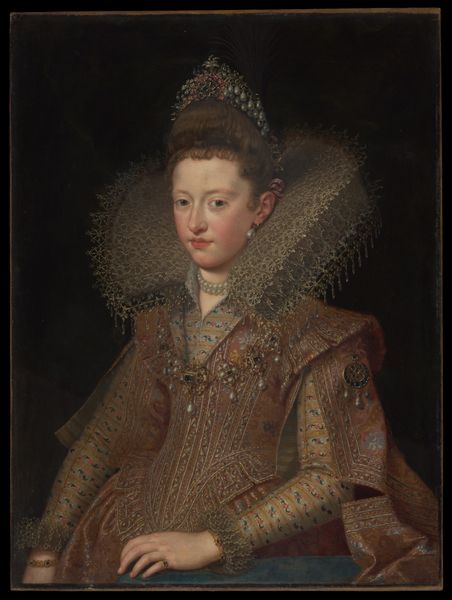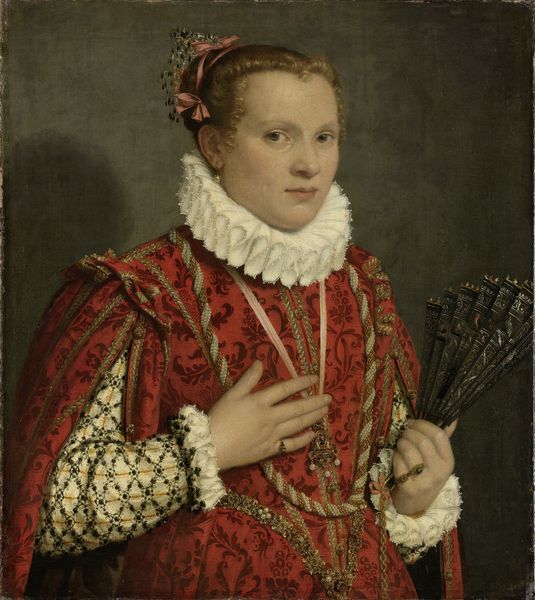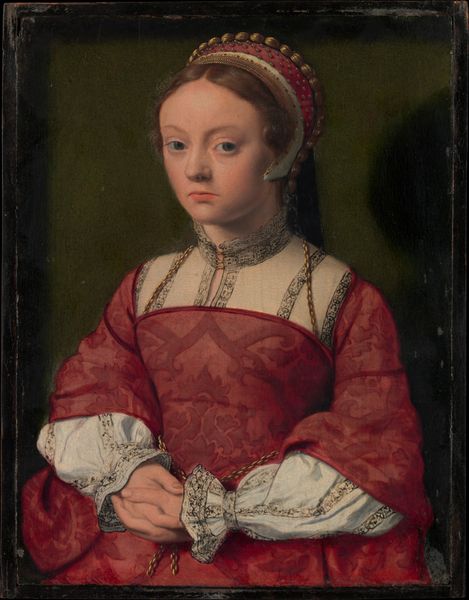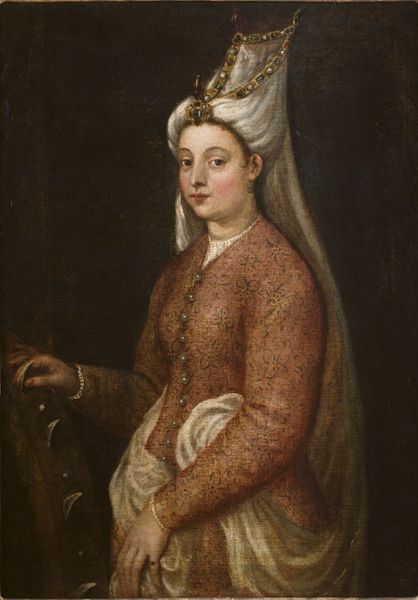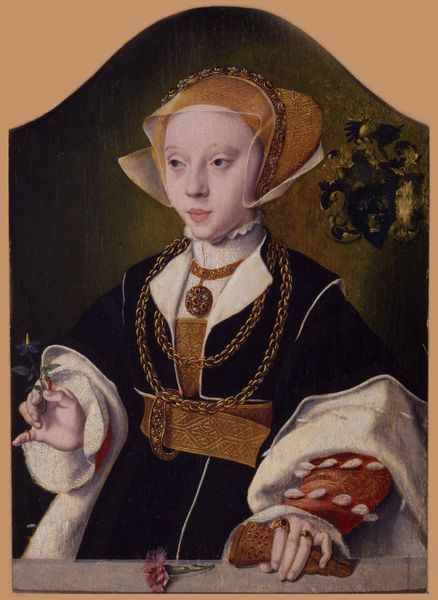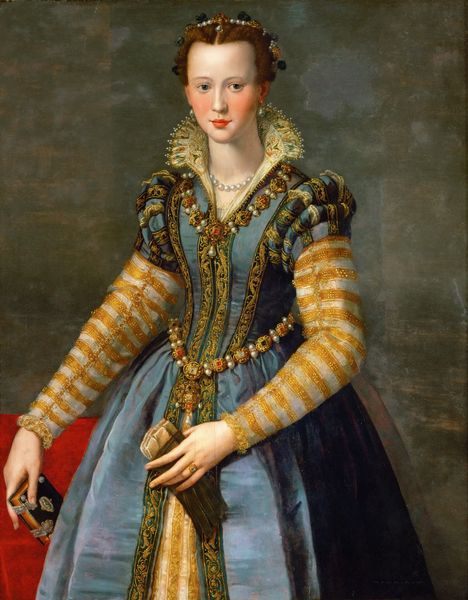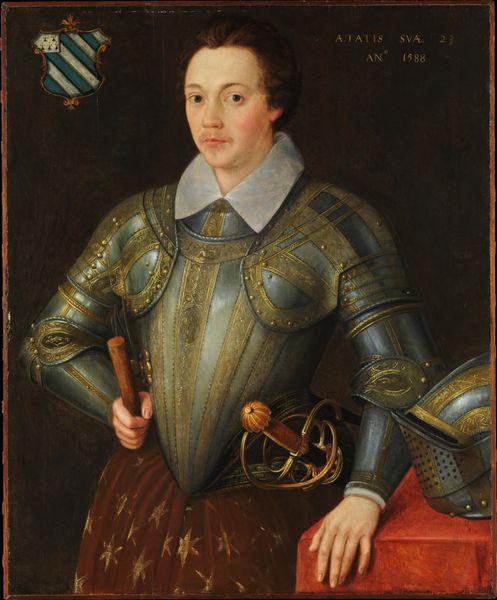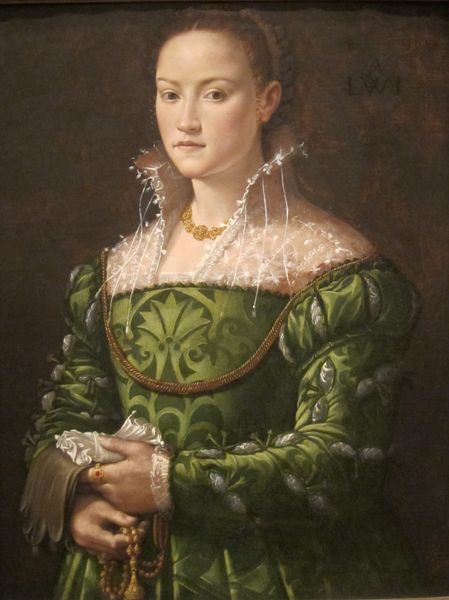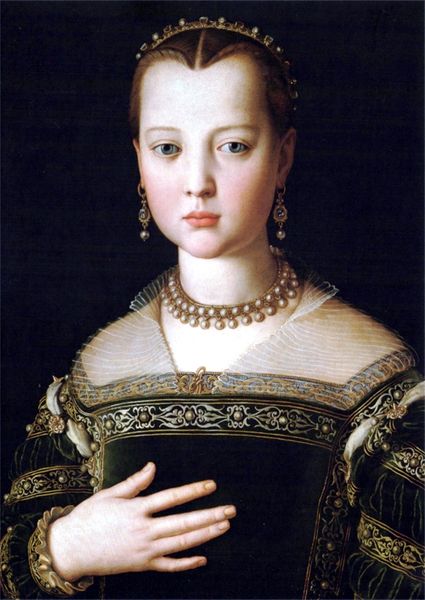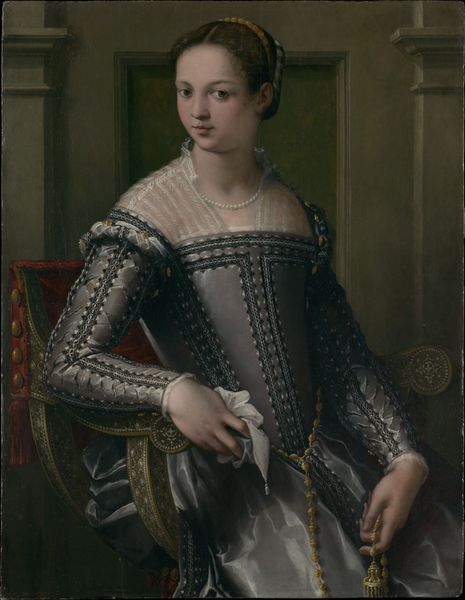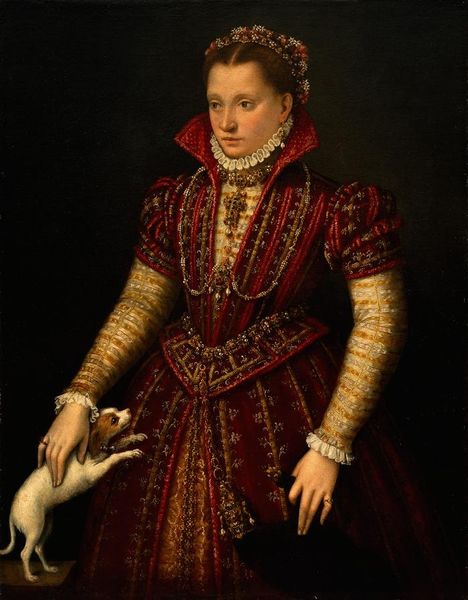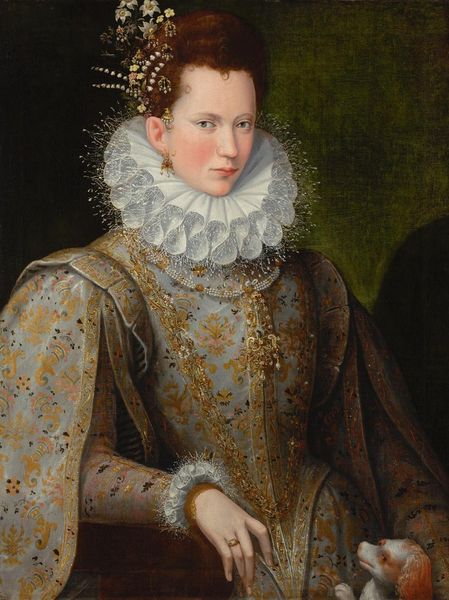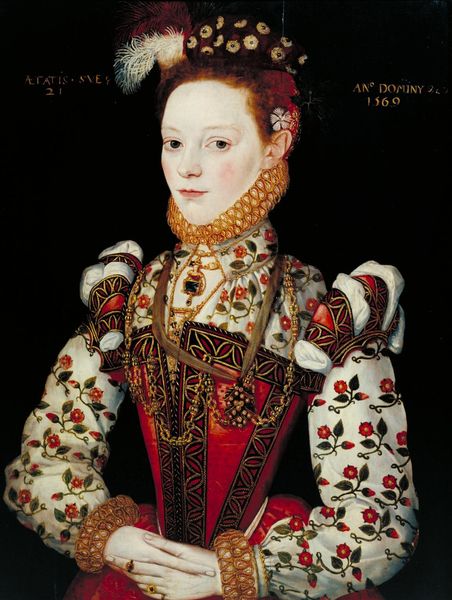
oil-paint
#
portrait
#
oil-paint
#
figuration
#
oil painting
#
italian-renaissance
#
portrait art
Dimensions: 100 cm (height) x 77 cm (width) (Netto)
Curator: Let's take a look at this intriguing artwork: "Portrait of a Young Woman as Portia Catonis", attributed to Santi di Tito and thought to have been created sometime between 1551 and 1603. Editor: Immediately striking! The blush-pink fabric against that mossy green backdrop... there's a gentle vibrancy, but also an underlying coolness, wouldn't you agree? Curator: The woman depicted is posing as Portia Catonis, an important Roman figure celebrated for her virtue and commitment to republican ideals. Her very being turned into a political symbol. Editor: Semiotically, the composition leads my eye directly to the face, then downwards across her dress. The meticulous details in her golden sleeves contrast nicely with the flowing simplicity of her dress. It all works to draw my eye up and down across the vertical plane. Curator: Note how Santi di Tito positions her within a larger political and social landscape. These kinds of portraits were used to send carefully crafted messages, especially about a family's aspirations and allegiance. Editor: Her slightly furrowed brow—almost a delicate vertical stroke—speaks volumes. And what about the object in her hand? What is it? It's small and hard to tell exactly. Is it a jewel? Curator: It is possibly a precious stone, but more broadly the jewelry itself reinforces a family’s wealth and prestige, the attire suggesting a deliberate alignment with specific social expectations of their time. A portrait such as this would offer not just likeness but societal roles. Editor: Absolutely. I think looking at the formal elements here is also interesting in that the controlled brushstrokes and carefully balanced colors evoke a powerful and interesting character in the artist's studio. Curator: For me, it underscores the way artists actively participated in constructing public memory and ideals during the Renaissance. Editor: Ultimately, it is interesting to look at all the aspects the artist utilized in an amazing configuration, offering depth into society’s views at that time.
Comments
No comments
Be the first to comment and join the conversation on the ultimate creative platform.
